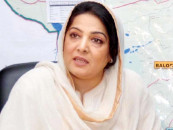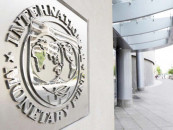Country to spend Rs903b on repayment and servicing
Pakistan will spend about $3.3 billion this year on repaying foreign loans and interest accrued on them.

The National Assembly has been informed by the finance ministry that Pakistan will retire foreign loans worth $2.4 billion this year and another $897.2 million would be used for paying interest on foreign loans. The indicated amount is $348 million (Rs30 billion) more than what the government had announced in the federal budget for the purpose, indicating further pressure on budget.
According to the finance ministry, a total of Rs903 billion ($10.5 billion) will be spent this year to pay interest on domestic and foreign loans and retiring foreign loans. The major chunk, Rs622 billion, is expected to go towards domestic debt servicing.
As highlighted by a recent ADB study, after accounting for expenditure on defence, debt servicing and paying out subsidies, the government is left with very little money to run the country.
It is estimated that Pakistan’s total public debt, almost equally divided into domestic and foreign debt, has surged over Rs9 trillion. The incumbent coalition government has added Rs2.83 trillion to debt over the last two years.
In 2007-08, foreign debt stood at Rs2.9 trillion which has ballooned to over Rs4.5 trillion in 2010. The depreciation of the rupee against the dollar, approximated at 32 per cent, is a major factor behind this increase. Meanwhile, domestic debt in the corresponding year was recorded at Rs3.3 trillion.
Pakistan’s tax-to-Gross Domestic Product ratio of 9.6 per cent is one of the lowest in the world and is seen by many as a source for increased government borrowing to run day-to-day affairs. International donors have repeatedly asked Pakistan to mobilise its own resources instead of seeking more loans.
Borrowing
The finance ministry also informed parliament that Punjab has borrowed over Rs66.6 billion from the State Bank. The window of borrowing is used by the province to pay the salaries of its employees.
The amount includes Rs40 billion on account of an overdraft from the previous fiscal year that the federal government converted into loan in order to win over the largest province’s support for the seventh National Finance Commission Award.
A ministry official said that the province was paying 15 per cent interest on the loans taken from the central bank.
Meanwhile, Balochistan has borrowed Rs19.8 billion from the State Bank while Sindh and Khyber-Pakhtunkhwa do not owe anything to the central bank.
Published in The Express Tribune, October 2nd, 2010.



















COMMENTS
Comments are moderated and generally will be posted if they are on-topic and not abusive.
For more information, please see our Comments FAQ